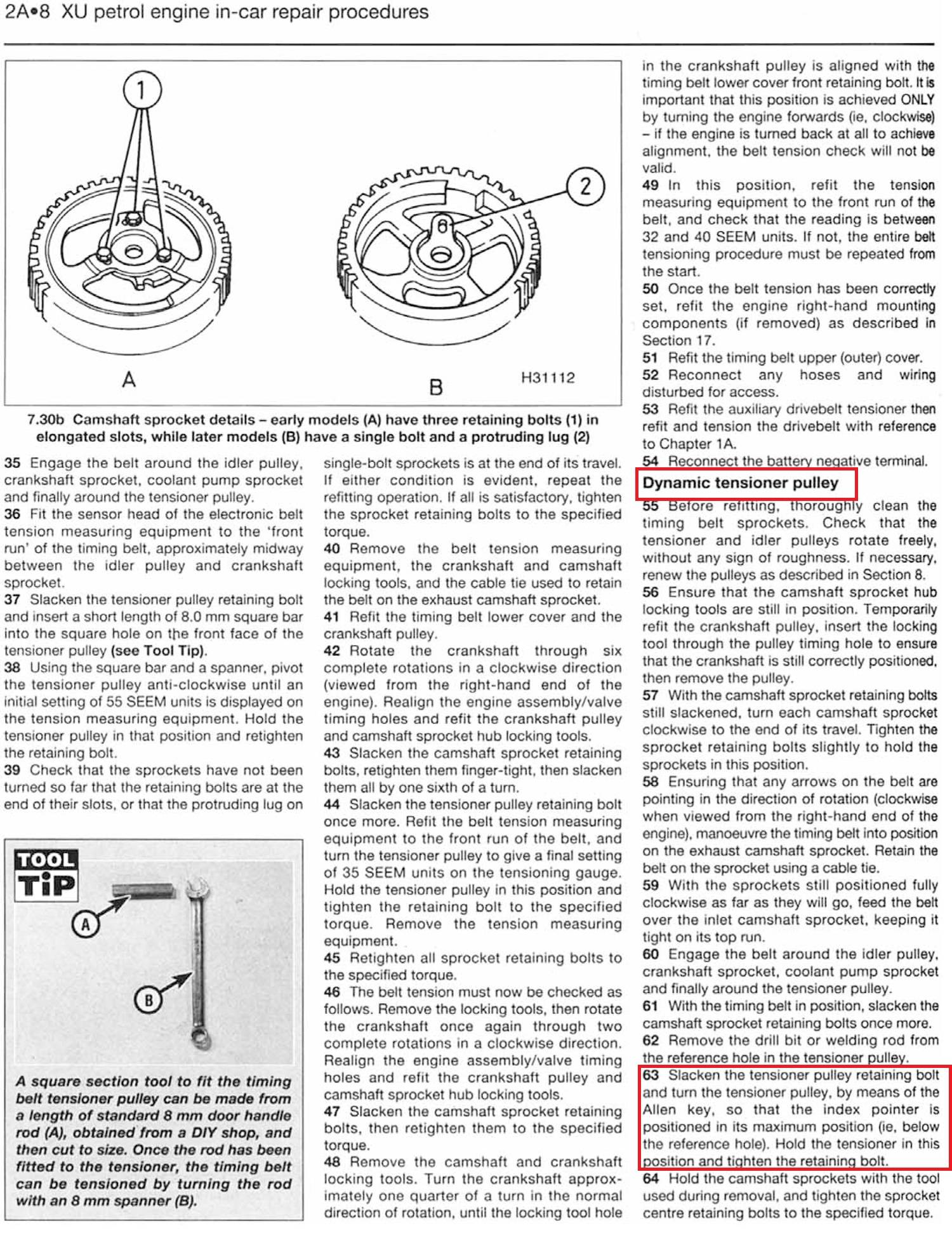My car is due for a timing belt change now. I have done everything, locked the camshaft pulleys and crankshaft sprocket and removed the old timing belt. Now, I want to install the new belt on the car but there are some procedures that I don't fully understand. In the following pictures, you will find the steps for tightening the belt tensioner after installing the new belt.
In the manual, it is said that you have to tighten the belt tensioner, crank the engine, then loosen the tensioner, then again tighten it. I don't understand these parts. Why don't they tighten the belt tensioner in the first place after fitting the new belt and adjusting the index pointer?
I also found a video in Youtube in which a Russian mechanic explains the whole procedure.
https://www.youtube.com/watch?v=5b0lciKkEdQ
In the above video, first he tightens the belt tensioner bolt at 23:00, then he tightens it again at 24:52 and then again he tightens it at 29:25! And finally, he tightens it at 34:26 for the last time!
Why did he divide the tightening into 4 different phases?


